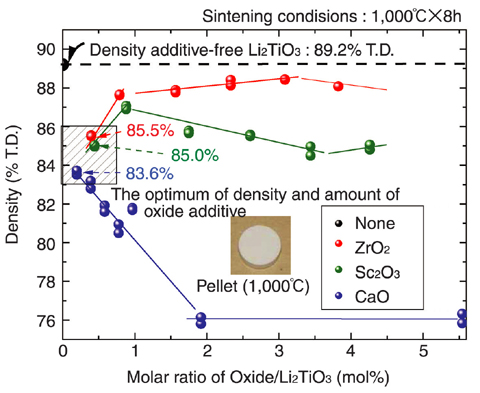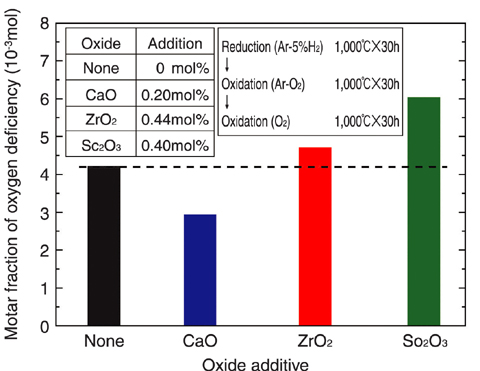
Fig.3-20 Density of Sintered Li2TiO3 with different amounts of oxide additives

Fig.3-21 Molar fraction of oxygen deficiency of Li2TiO3 with oxide additives
Tritium (T) doesn't exist in the natural world, but a fusion reactor uses deuterium (D) and T as fuel in the DT nuclear fusion reaction. Therefore, it is necessary to irradiate lithium (Li) filled to the fusion reactor blanket with neutrons, thus producing T artificially. Among materials including Li, Lithium titanate (Li2TiO3 is reduced. Thus, there is a problem that the amount of the T release decreases. It is necessary to develop a method of controlling Li2TiO3 crystal grain growth so that it is not reduced easily with the H 2 gas. This research dealt with improvement of Li2TiO3 by the addition of oxides.
CaO, ZrO2, and Sc2O3 were investigated as the added oxide. The sample was sintered at 1,000°C, and made into pellets (Fig.3-20). The dependence of decrease in density after sintering upon addition of small amounts of oxide was obtained from the density of the sintered pellets and the amount of the oxide addition (Fig.3-20).
Next, the reduction of Li2TiO3 with added oxide in the H2 atmosphere was examined by means of thermogravimetry. If Li2TiO3 is reduced with H2, O loss is caused. The amount of the oxide addition was adjusted to achieve the optimum density as shown in Fig.3-20. The color of the sample changed from white into thin blue if the sample was reduced, and a weight decrease due to O loss was observed. Fig.3-21 shows the calculated O deficiency in the samples. Li2TiO3 with CaO added had less oxygen deficiency than the other kinds of Li2TiO3.
The overall results suggest that the oxide additives are able to control not only the growth of the grain size but also the amount of oxygen deficiency. Thus, the present study confirmed the efficacy of oxide addition to Li2TiO3 in developing high-temperature resistant breeding materials.